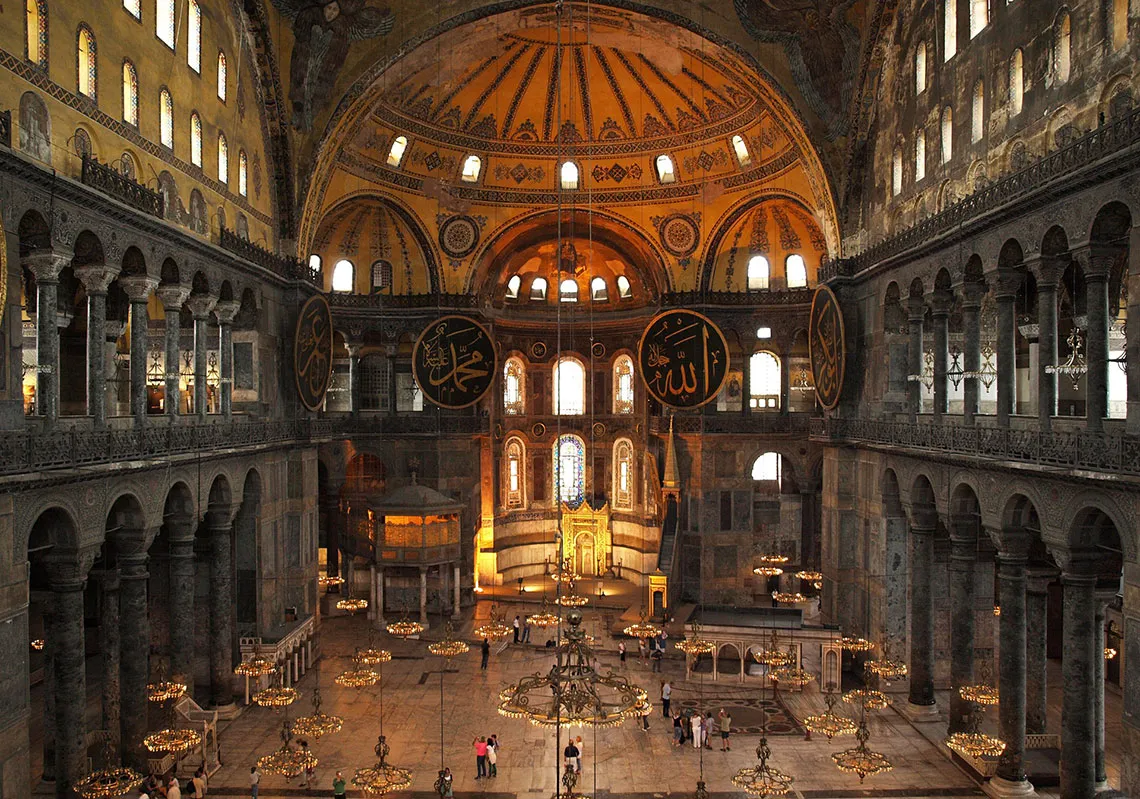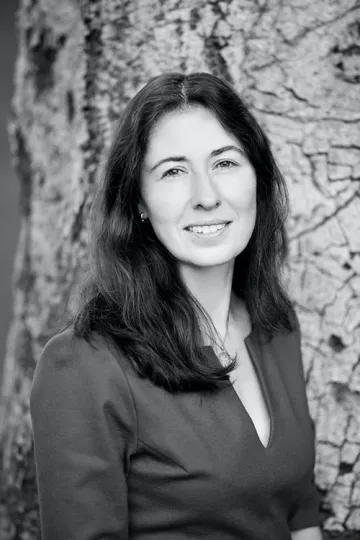Lecture Recap and Video: Bissera Pentcheva on 'Eternal Victory: Hagia Sophia and the Byzantine Vision of Empire'
2021 Stahl Lecture

Hagia Sophia in Constantinople. Photo by Filip Filipović, courtesy Pixabay.
Hagia Sophia enthralled its visitors with its luminous and immense interior and reverberant acoustics. The chants composed for this space further amplified the metaphysical effect of wet sound. By using both intercalations of non-semantic vocables and long melismas, these liturgical songs stretched the semantic chains, obfuscating the meaning and pushing sound beyond the register of human language. The divine in Hagia Sophia emerged in the aural and visual—reverberation, glitter, shadow—freed from anthropomorphic form. But this system was challenged after Iconoclasm (843 CE) when monumental figural decoration was introduced in the Great Church (867 CE) and the palatine chapels. Pentcheva’s lecture explores the change through the concept of Eternal Victory.
Starting in the ninth century but gaining momentum in the late tenth century, Byzantium reclaimed its territories in the East: capturing Crete, Antioch and northern Palestine. These victories were celebrated with triumphal processions in Constantinople. New chants were written specifically to be performed in the Great Church and the palatine chapels. Some of the poetry and music was composed by the emperor himself. Analyzing the melodic contour of some of these songs shows how they strategically used the acoustics of the dome to offer a glittering vision of power. And at the same time, the figural mosaics of Hagia Sophia and in the palatine chapels gave an anthropomorphic concreteness to the experience of the divine in the reverberant sound. None of these images survives. Yet, a monastery near Thebes (Greece), Hosios Loukas, preserves one of the most extensive Byzantine programs. It channels the Constantinopolitan liturgy and enables us to explore how reverberant sound and figural images operated together to shape a vision of the resurgent empire.
Watch the Lecture

About Bissera Pentcheva
Bissera Pentcheva, the ICMA Stahl Lecturer for 2021, is professor of art and art history at Stanford University, with a courtesy appointment in the Department of Classics. Author of three books (Icons and Power, The Sensual Icon and Hagia Sophia: Sound, Space and Spirit in Byzantium) and editor of two more (Aural Architecture in Byzantium and Icons of Sound), Bissera has redefined the study of Byzantine architecture by means of new insights at the intersection of architecture, art, acoustics, liturgy and theology. Her particular interest has been the “animation” of objects and buildings over time as they are perceived in changing conditions of light and sound. To understand these phenomena in the past she has adopted contemporary technology to capture atmospheric effects around objects and in buildings and to match sonic performance today with the “acoustic signatures” of historic buildings.
Sponsors
Co-Sponsored by the Department of Civil and Architectural Engineering and Mechanics, Department of History, Fred Fox School of Music, School of Art, UArizona Medieval, Renaissance and Reformation Committee and CAPLA. Funded by the International Center of Medieval Art.



